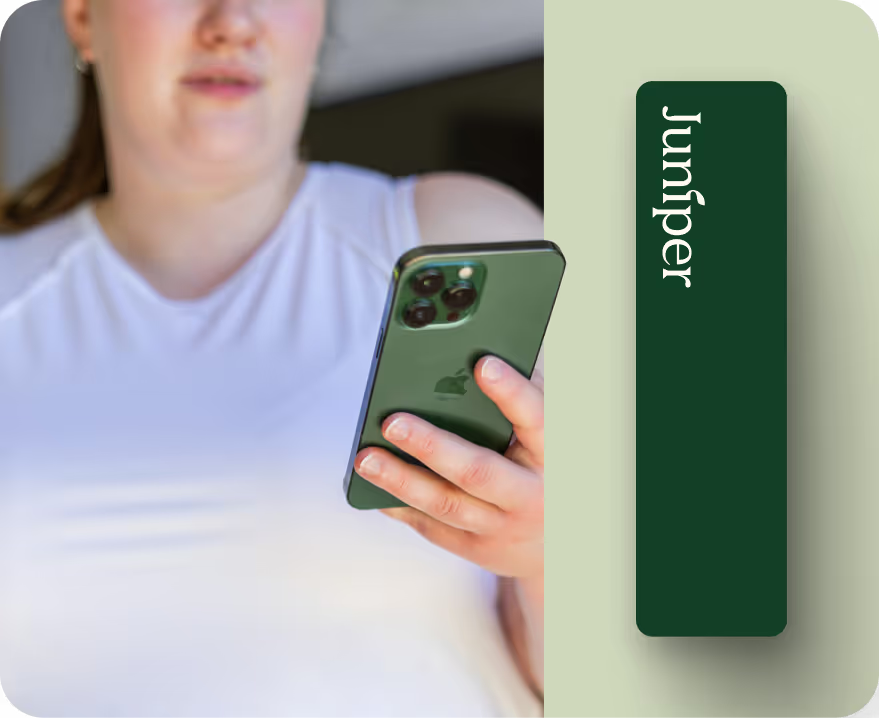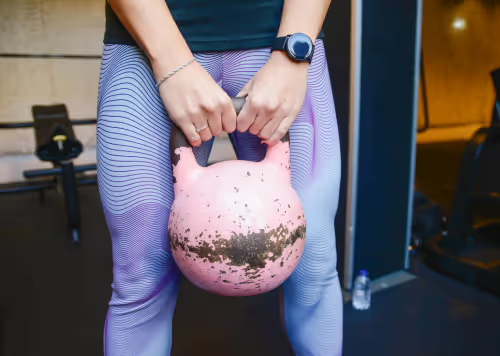How to improve grip strength for health, sport, and daily life
Grip strength is a measure of the maximum force that is possible from your hands and forearms.


Key takeaways
- Grip strength is more than just hand power – it’s a reliable indicator of overall muscle strength, longevity, and independence as you age.
- Strengthening your grip can be done through isolation exercises like squeezing a ball or plate pinches, and functional movements such as deadlifts, pull-ups, and farmer’s carries.
- Maintaining good nutrition, staying active, using your hands often, and limiting smartphone use can all help preserve and improve grip strength over time.
It may not be top of your mind on most days, but having good grip strength is actually a pretty important part of life. It can help you with playing sports, performing everyday tasks, and it's even the secret to a good, strong handshake.
But what if your hand muscles are not up to the task? That's okay – there are plenty of ways to improve your grip strength. We're here to help by explaining how to get a better grip.
We'll start with the basics, like the different types of grip strength and why it matters. Then we'll give you the best exercises for improving your grip and lifestyle habits to focus on.
What is grip strength?
Grip strength is a measure of the maximum force that is possible from your hands and forearms [2][3]. It can be tested on both your dominant and non-dominant hands, with most people a little bit stronger on their preferred side [1].
What are the different types of grip strength?
When it comes to your grip, there are 3 main actions you should know: crush, pinch and support [2].
Your crush grip allows you to close your fingers around an object. You might use this grip to crush a can, open a jar or squeeze out a sponge.
Your pinch grip allows you to pick up objects with your fingers and thumb. You might use this grip to pick up a cup, hold a pen or pencil, fasten shirt buttons or turn a key in a lock.
Your support grip allows you to hold objects for a long time, especially ones with some weight to them. You might use this grip for things like carrying shopping bags, playing tennis or using tools.
Why is grip strength important?
The main reason that every person on the planet needs grip strength is that it supports their hands with everyday tasks. Whether that’s getting dressed, making meals or driving, without grip strength, many things become more difficult.
There are also plenty of sports that require good grip strength, such as gymnastics, tennis, rock climbing and martial arts [2].
Making life easier is a good place to start, but it’s not the only reason grip strength matters. We know from research that a weak grip could be a bad sign for your health.
Grip strength and your health
Multiple studies have found that low grip strength is linked to an increased risk of serious disease, as well as poor mental health [3].
On the flip side, we also have research that tells us people with a stronger grip are predicted to live longer.
But what makes grip strength such a reliable measure for overall health and well-being? It all comes down to muscle.
Health experts and researchers use grip strength as an indicator of the muscle mass and strength in your entire body [1][3]. People with more lean body mass tend to live longer and healthier lives.
So, it’s less about how strong your grip is and more about what that means for the rest of your body. In simple terms, low grip strength tends to mean less muscle strength, while higher grip strength usually means more muscle.
Why does grip strength get weaker with age?
While most of us are prepared for fine lines and greying hair as we grow older, there are other changes to be aware of too – like weight gain and a drop in muscle mass.
In medical terms, losing muscle as you age is known as sarcopenia [9]. This general decline in muscle mass is a key reason that your grip strength gets weaker over time.
The good news is, the decline is pretty slow. A study of over 100 generally healthy adults in the UK found that grip strength dropped at a slow rate of about 1% per year [4].
The not-so-good news is, it compounds over time for an average of 20% to 45% muscle loss through the ageing process.
That could make a real difference to your independence, since less body strength makes it harder to perform everyday activities on your own [3]. Finding ways to improve your grip strength is a good way to help maintain independence as you age.
What muscles affect your grip strength?
Your hands might look pretty simple on the outside, but boy, is there a lot going on under the surface.
There are actually over 30 muscles in your hands and forearms that help with general movement and strength [5]. To make things super clear: your forearm is the area leading from your wrist to your elbow.
The muscles in your hand are known as intrinsic muscles, while the ones in your forearm are called extrinsic muscles. These hand and forearm muscles work together to make your hands function in every way; from opening and closing your fingers to gripping objects, rotating your wrists and more.
How to improve grip strength
Whether you love a gym workout or prefer the comfort of your own home, there are exercises you can use for better grip strength. We’ve separated them into 2 main categories for you: isolation and functional.
Isolation exercises focus on single muscle groups, like the hands or arms only. Functional exercises engage more of your whole body. Both are effective, so it’s really up to you.
Isolation grip exercises
The great thing about these exercises is that they’re able to be done at home with equipment many people already own. The NHS recommend doing a combination of these exercises for up to 15 minutes, twice per day [7][11]:
- Squeeze a ball: This can be done with a rubber ball, stress ball or household sponge. Take the object in your hand and squeeze as hard as you can for 15 seconds, then relax.
- Wring a wet towel: Soak a towel or cloth in water, then wring it out over a sink until there is no more water left.
- Play-dough: Squeeze, stretch and shape play-dough between your hands for up to 5 minutes. To make this one harder, try chilling the play-dough in the fridge first for up to 1 hour.
- Finger extensions: Loop a rubber band or hair tie around all 4 fingers and the thumb. Spread your fingers as wide as possible, then close. Repeat 20-30 times before swapping hands.
- Plate pinch: This can be done with heavy books at home or weight plates at the gym. Hold one in each hand with your arms down. Grip with your thumb and fingers, squeeze and hold for up to 1 minute. Repeat 2-3 times.
Functional grip exercises
If you want to strengthen your grip during your regular workout routine, then these common exercises are a good place to start [10][11]:
- Dead lifts
- Farmer’s walks/carry
- Bicep curls
- Pull-ups
Basically, any move using a barbell or dumbbells has the potential to help with your grip strength since it requires you to lift or carry heavy objects.
Functional movements like this can also help you focus on whole-body strength. For example, deadlifts, push-ups and pull-ups are all good for muscle-building in the hands, core, back and arms [3].
Other ways to support grip strength
Since grip strength is key for daily living, you might be wondering if there’s anything you can do in your day-to-day life to improve it. We’re glad you asked.
There are a few ways to support your grip strength through your lifestyle, from checking your diet to putting down the smartphone. Here are 4 we recommend.
Eat a healthy diet
There are a few studies that have explored the links between grip strength and nutrition, with some interesting results.
Foods that are high in protein, like oily fish, have been found to help with muscle-building. So too have various micronutrients from iron to zinc, B vitamins, vitamin D and vitamin E [9].
While there is some evidence that carbohydrates tend to have a negative effect on muscle, it’s still important to focus on a balanced diet that includes all the key food groups.
When it comes to your diet, we always recommend working with an expert, like a dietician or health coach, who can help build a personalised nutrition plan for your goals.
Prioritise physical activity and weight loss
There has been quite a lot of research into how body weight, exercise and grip strength interact.
The general gist is that a higher BMI is linked with lower grip strength. The same goes for the other way; with a lower BMI being linked with higher grip strength [8].
One study from South Korea also found that people with weak grip strength were more likely to have lower levels of physical activity, too [1].
If losing weight and getting more active have been goals for you this year, there are lots of ways to go about it. You could talk to your doctor about your options, enlist the help of a personal trainer, or try a holistic programme, like Juniper.
With the Juniper Programme, you can access weight loss medication tailored to your health and goals — never one-size-fits-all. Our app helps you track progress, connect with your care team, adjust medication as needed, and access expert support. You'll also get structured tools to build lasting habits and ongoing care.
Kickstart your weight loss journey with Wegovy or Mounjaro, two groundbreaking weight loss medications that mimic the GLP-1 and GIP hormones, respectively, to help control cravings, delay stomach emptying, and keep you feeling fuller for longer. These clinically backed treatments help members experience up to 23% body weight loss.
We help you make lifestyle and habit changes, and we’re in it with you for the long run, having helped thousands of women achieve their weight loss goals.
Ready to see if Juniper is right for you? You can check your eligibility here.
Use your hands more
Studies have shown that people who use their hands more often have better hand grip strength and dexterity. This could be related to their work, like dentistry, or hobbies, like playing a musical instrument [4][8].
Use your smartphone less
Trust us when we say, we know it’s not your fault. You open up your phone to check one thing and somehow end up down a rabbit hole for hours. It can happen to the best of us, but it’s still a habit we’re better off without.
More than one study has found that higher daily smartphone use is linked with weaker hand grip strength [6]. It can also lead to other problems like dry eyes or neck and shoulder pain.
All is not lost since it is reversible, with another study showing that exercise could help improve grip strength.
So, what counts as high daily usage? Research varies, but it could be anywhere from 4-7 hours per day. Where possible, try to stay on the lower side of this.
Image credit: Pexels

in 1 year
- No GP referral
- Ongoing expert support
- Trusted by 150,000 members worldwide

- https://pmc.ncbi.nlm.nih.gov/articles/PMC10777545/
- https://www.ebsco.com/research-starters/health-and-medicine/grip-strength
- https://theconversation.com/what-the-strength-of-your-grip-can-tell-you-about-your-overall-health-256271
- https://pmc.ncbi.nlm.nih.gov/articles/PMC4331509/
- https://www.physio-pedia.com/Wrist_and_Hand
- https://pmc.ncbi.nlm.nih.gov/articles/PMC7885228/
- https://sthk.merseywestlancs.nhs.uk/media/.leaflets/66559d0f411524.63497715.pdf
- https://www.mdpi.com/1424-8220/24/16/5100
- https://www.sciencedirect.com/science/article/abs/pii/S0047637420300658
- https://www.theguardian.com/society/2023/jun/12/its-been-called-a-vitality-meter-what-your-grip-says-about-your-health-and-how-you-can-improve-it
- https://www.womenshealthmag.com/fitness/a30023950/grip-strength/










.avif)
.avif)